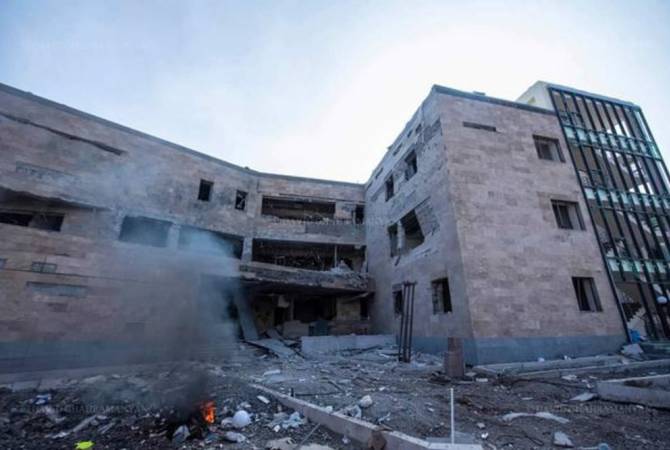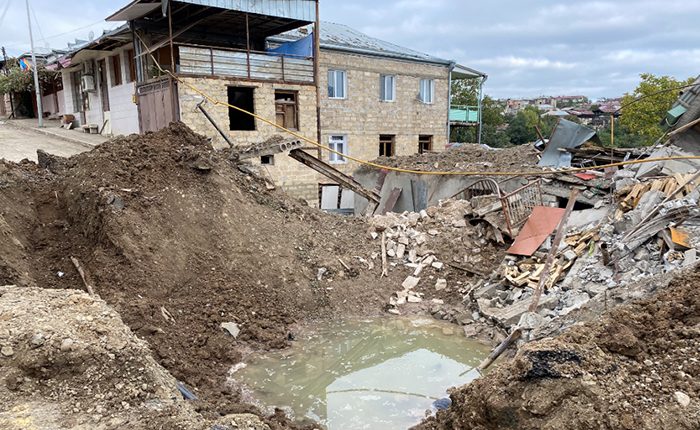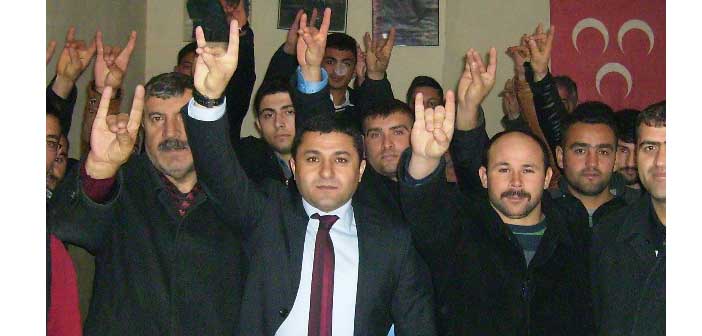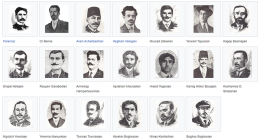BERLIN — Azerbaijani forces carried out indiscriminate attacks in Stepanakert in violation of the laws of war during the conflict in Nagorno-Karabakh, Human Rights Watch said today.
A Human Rights Watch on-site investigation in Stepanakert, Nagorno-Karabakh’s largest city, found numerous incidents in which Azerbaijan’s forces used inherently indiscriminate cluster munitions and artillery rockets or other weapons that did not distinguish between military targets and civilian objects. Evidence relating to an attack on October 4, 2020, indicates that multiple strikes hit residential homes in less than a minute suggesting possible bombardment – treating the whole area as a military target – which is prohibited under the laws of war. Azerbaijani forces also attacked infrastructure that may have an unlawfully disproportionate impact on the civilian population. The use by Armenian and local Nargono-Karabakh forces of military bases and dual-use infrastructure in Stepanakert placed the civilian population unnecessarily at risk.
“Azerbaijani forces carried out apparently indiscriminate air and ground strikes hitting civilian structures in Nagorno-Karabakh’s largest city that should be impartially investigated,” said Lama Fakih, crisis and conflict director at Human Rights Watch. “While the hostilities may have stopped, the civilian population continues to suffer from possibly disproportionate attacks on critical infrastructure.”
On September 27, Azerbaijan began air and ground attacks across Nagorno-Karabakh, an escalation in the conflict between Azerbaijan and Armenia and the local authorities in Nagorno-Karabakh. Fighting continued until November 10, when Armenia, Azerbaijan, and Russia concluded an agreement to end the hostilities.
From September 27 through October 28, Azerbaijani forces conducted strikes on Stepanakert, at times using cluster munitions and Smerch and Grad rockets, which are not capable of precision targeting. Azerbaijani forces attacked Armenian and Nagorno-Karabakh forces based in or around Stepanakert, including at two military bases, one of which is believed to be the headquarters for the local defense forces. Several structures were also military objectives, subject to attack. However, Human Rights Watch found that in the attacks investigated, Armenian and local forces were not deployed nor had set up any significant defensive systems or other weaponry in the city.


By early October, most of the over 50,000 residents had fled the city, many to Goris and Yerevan in Armenia. Some civilians remained in Stepanakert, including older people and servicemen’s families. Since the fighting ended, tens of thousands have reportedly returned.
Human Rights Watch visited Nagorno-Karabakh in October and November and spoke to 19 civilian residents of Stepanakert, two officials from the local authorities, a nongovernmental organization worker, and four other residents who had fled to Armenia but who were present during the fighting. Human Rights Watch also acquired and analyzed satellite images taken between September 27 and late October that corroborate accounts, photographs, and videos of repeated Azerbaijani air and ground attacks in Stepanakert, including scores of damaged structures and impact sites. Human Rights Watch was able to examine a small number of the attack sites in Stepanakert.
Human Rights Watch found that, in addition to the attacks on military targets, Azerbaijani forces attacked residential areas with inherently indiscriminate weapons and dropped aerial munitions and fired heavy artillery into populated areas that contained no apparent military objectives. Such attacks are indiscriminate, violating the laws of war, because they do not distinguish between civilians and civilian objects and military targets. Warring parties should also refrain from using explosive munitions with wide-area effects in populated areas because they cause both immediate and long-term harm to the civilian population.
Azerbaijani strikes damaged or destroyed numerous businesses and homes in four neighborhoods visited, two of which had no apparent military target nearby. Also, on October 28, an Azerbaijani artillery rocket strike damaged the newly renovated maternity ward of the Republican Medical Center, which had yet to open; because the maternity ward had moved its operations to the basement, the attack caused no serious injuries.










